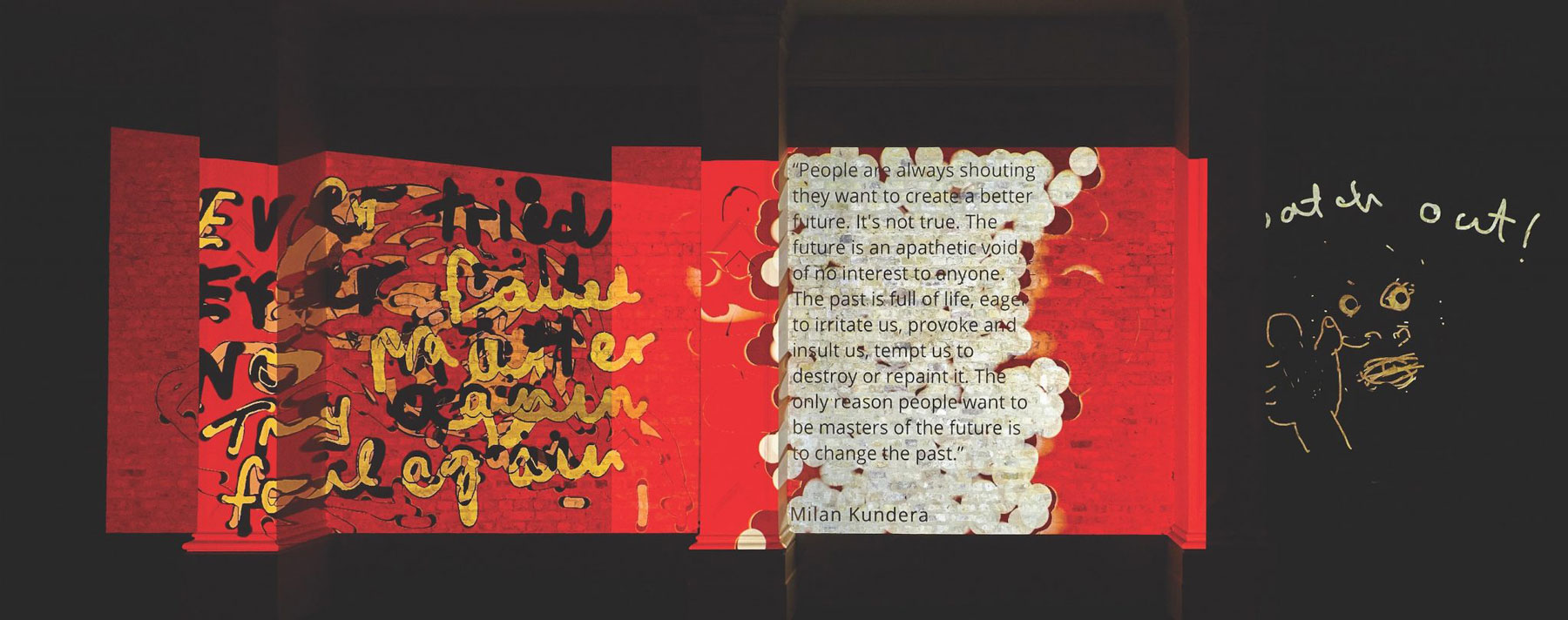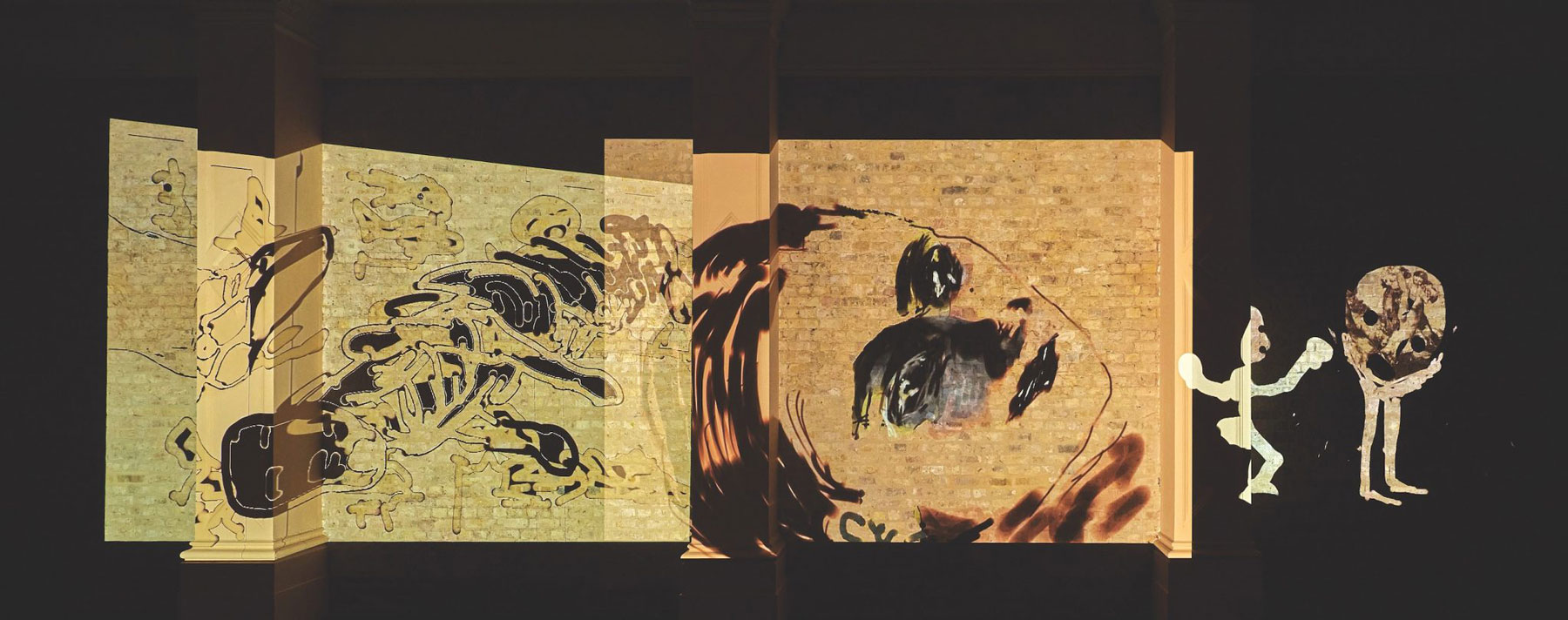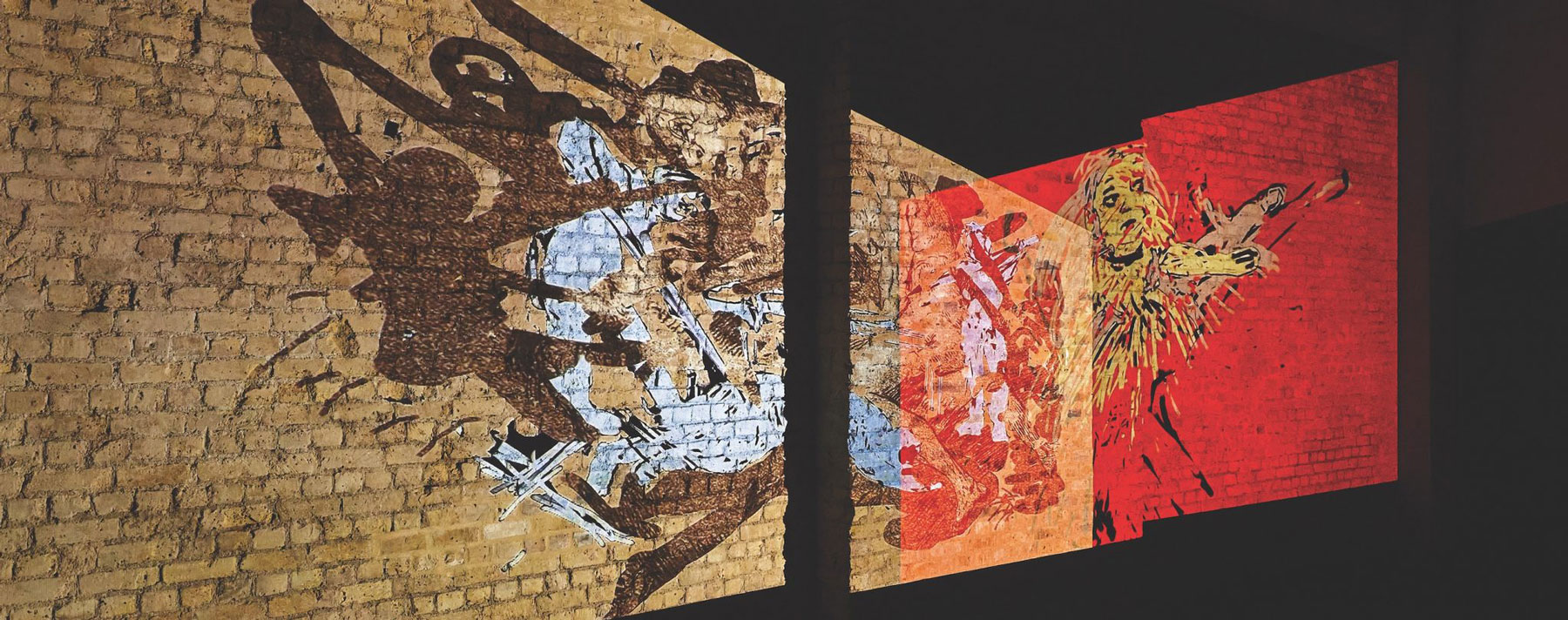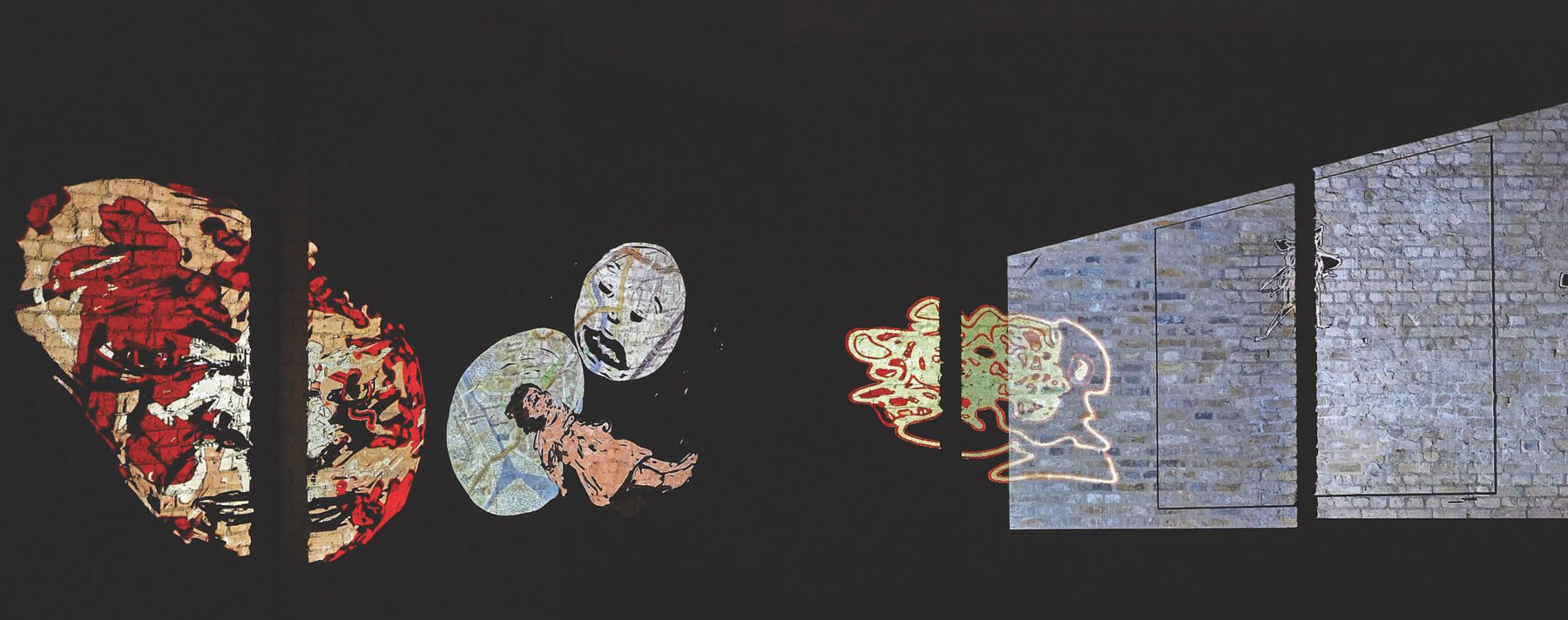ART CITIES:London-Nalini Malani
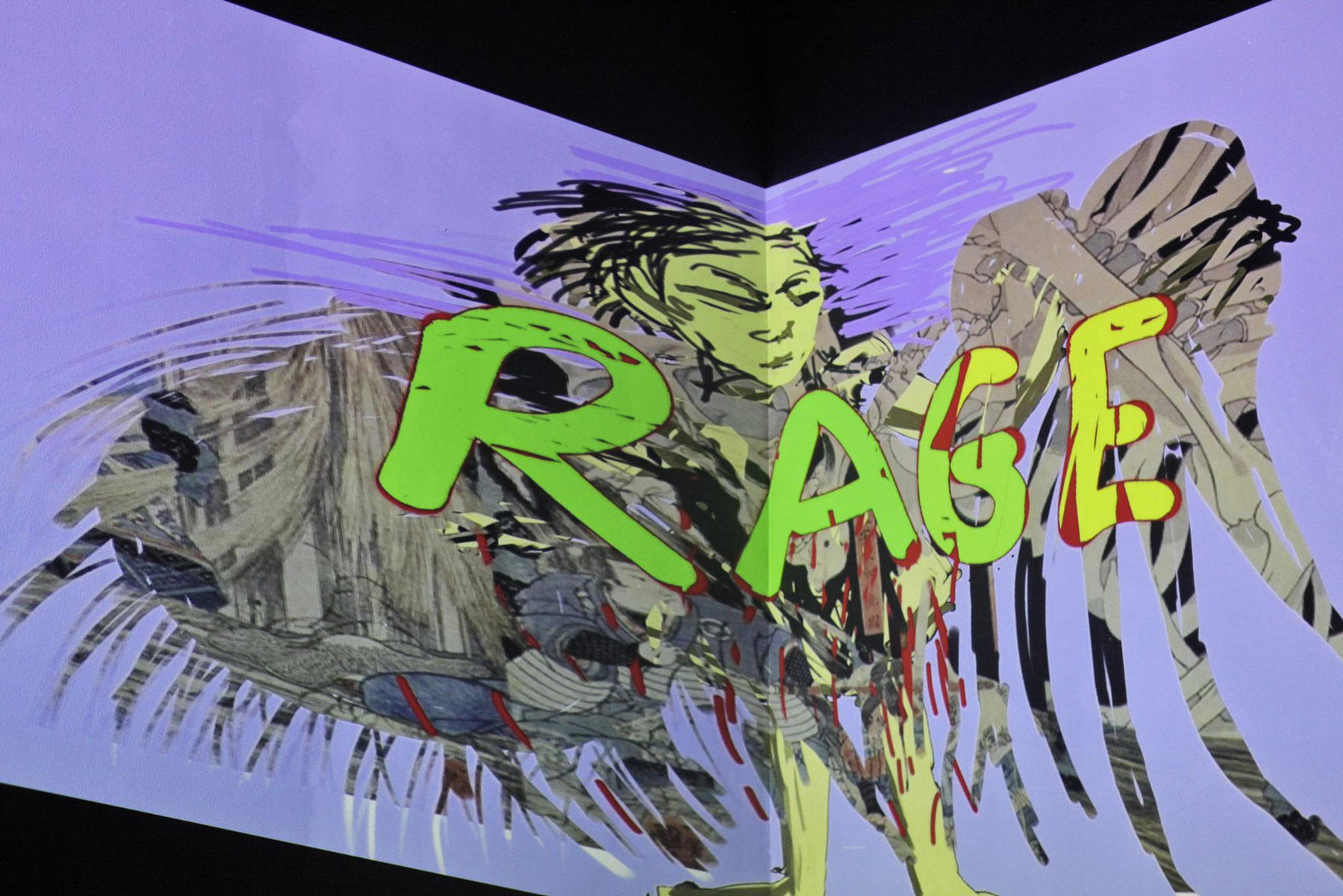 Nalini Malani is widely acknowledged for her masterful refinement of a woman’s historical vision concerning the global tensions around piercing conflicts. Born in India, a melting pot of diverse ethnic groups, languages and religions, Nalini Malani focuses on the trauma caused by endless conflicts between religions and ethnic groups. The history of constant disunion and chaos, which dispersed to racial and religious disputes even after they were liberated from long colonialism, has been the solid basis for her works.
Nalini Malani is widely acknowledged for her masterful refinement of a woman’s historical vision concerning the global tensions around piercing conflicts. Born in India, a melting pot of diverse ethnic groups, languages and religions, Nalini Malani focuses on the trauma caused by endless conflicts between religions and ethnic groups. The history of constant disunion and chaos, which dispersed to racial and religious disputes even after they were liberated from long colonialism, has been the solid basis for her works.
By Efi Michalarou
Photo: Whitechapel Gallery Archive
Nalini Malani’s artistic language, categorised into race, class and gender, is represented as a visual final product mixing the wounds and suffering of India’s history with her own personal stories. Their narratives, wherein past and present, true records and falsehoods, and history and myth are linked like a Mobius strip, are dismantled and restructured in various methods within an organic space where visual media, its creator, and its viewers join together. For her first major UK commission, Nalini Malani presents “Can You Hear Me?”, an installation (or as she says Animation Chamber), consisting of 88 iPad animations projected on the walls of Whitechapel Gallery’s historic interior. Made between 2017 and 2020, the animations feature overlapping hand-drawn images, sounds and quotes. The report of the abduction, rape and brutal murder of an 8-year-old girl in India in 2018 is one of the triggers behind this new iteration of “Can You Hear Me?”, a prompt to consider what is being listened to and what is being heard. Visitors are surrounded by a flow of images and ideas that address global issues of feminism and social injustice. Malani’s animations are made by drawing, rubbing, scratching and writing directly with her fingertips on an iPad, which gives a tactile and immediate quality to the work, reflecting the unfixed and spontaneous nature of thought. This 21st Century version of the artist’s notebook is projected directly onto the brick walls of the Gallery, with text and image taking the form of moving graffiti. “I studied the history of the Gallery and the Passmore Edwards Library, called ‘University of the Ghetto’, and their original socialist ideals appealed to me as a place where artists could realise their vision, as a catalyst for personal and political transformation – specifically, and specially, its rich history of exhibition pioneering women artists such as Joan Jonas, Eva Hesse, Frida Khalo, Cindy Sherman and the Guerrilla Girls… To honour the history of the building and the latest architectural intervention by Robbrecht en Daem and Witherford Watson Mann Architects, I decided to keep the room intact, where the exposed original Victorian brick walls would become shelves to “hold” the unfolding animation projections, as a series of open book pages, partly overlapping and collaging over each other”. In the former central reading room of the Whitechapel Public Library, Malani fills the space with quotes from influential writers who address issues that concern her, including Hannah Arendt, James Baldwin, Bertolt Brecht, Veena Das, Faiz Ahmad Faiz, Milan Kundera, George Orwell and Wislawa Szymborska. Within the babble of images, text and sound, five different types of animations emerge: the socio-political, abstract, feminine/masculine, satirical and the personal ones.
A pioneer of video art in India, Nalini Malani has a 50-year multimedia practice. Alongside her acclaimed Video/Shadow Plays, Wall Drawing/ Erasure Performances and Animation Chambers, she creates drawings, paintings, films and photographs. Embodying the role of the artist as a social activist, Malani gives voice to the marginalised through her visual stories. She draws inspiration from history, culture and her direct experience of the Partition of India to look at themes of violence, feminism, politics, racial tension, post-colonial legacies and social inequality, exploring in particular the repressive powers of the state. Starting out as a filmmaker and photographer after graduating from the Sir J. J. School of Art, Bombay, Malani broke out of the classical painting frame in the late 1980s to reach a wider audience, as a protest against the rise of orthodoxy in politics. In her art she places inherited iconographies and cherished cultural stereotypes under pressure. Her point of view is unwaveringly urban and internationalist, and unsparing in its condemnation of a cynical nationalism that exploits the beliefs of the masses. Many of her animations are available to view on her Instagram account, as part of her wish for her work to remain accessible to all.
Photo: Nalini Malani, Can You Hear Me?, Installation view at Whitechapel Gallery, 2020-2021, Photo: Luke Walker, Courtesy the artist and Whitechapel Gallery
Info: Curators Emily Butler, Mahera & Mohammad Abu Ghazaleh, Assistant Curator: Inês Costa, Whitechapel Gallery, 77 – 82 Whitechapel High Street, London, Duration: 23/9/2020-6/6/2021, Days & Hours: Tue-Wed & Fri-Sun 11:00-18:00, Thu 11:00-21:00, www.whitechapelgallery.org
